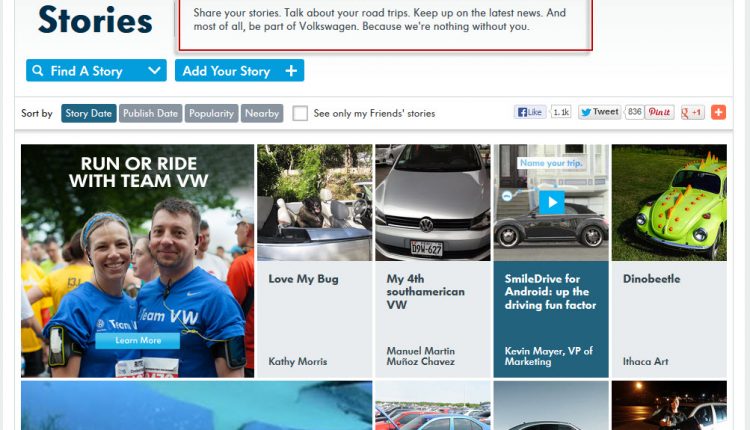Building credibility can be tough, both in your professional life and in your marketing.
At times, it can even feel a little like pushing a boulder uphill. It takes a lot of work to move a very small distance and the slightest mistake can wipe out all those hard-earned efforts.
Luckily for most of us, we don’t have to push the boulder of trust by ourselves. We have teams of peers willing to help and you have customers that can help if you empower them with the right tools.
So in today’s MarketingExperiments Blog post, I wanted to share with you three tips you can use to help others do your bragging for you.
Tip #1. Give customers real estate on your site to share their stories
Today’s customers are more than just a revenue stream …
They are brand advocates who write reviews on sites like Yelp and Urbanspoon that will ring louder than your marketing ever will. The savviest marketers understand offering customers a home to share those reviews and stories can add credibility to your products and services.
Take Volkswagen’s Stories page, for example, that pretty much turns customer testimonials into content marketing.
Another great example is Apple’s Support Communities page, where users help each other with tech support questions.
It’s all made possible simply by offering customers a little real estate on your website to share their stories and build communities.
Tip #2. Ask third-party supporters for endorsements
Another group of people that can do wonders for your credibility are third-party supporters.
You may ask, “Who are these people?”
Well, these are unbiased people or groups who endorse your products or services without a direct connection to you. That unbiased tip of the hat can carry some sway of merit with potential customers.
One classic example of third-party support would be the inclusion of a third-party rating system logo on your website, like the Better Business Bureau rating.
Published reviews mentioning your product or service in magazines like CNET or Fortune can also serve as third-party testimonials in addition to customer reviews.
Also, use security verifications in your sales funnel such as McAfee Secure or Symantec to mitigate customer anxiety and reduce friction.
A few simple changes and endorsements from trusted third parties can be worth much than what meets the eye!
Tip #3. Don’t forget to look to your data for answers
While customer testimonials and third-party endorsements offer support for right-brained consumers, quantified statistics provide support for the left-brained.
It is one thing to say your company has a high level of customer satisfaction, but if the customer satisfaction rating is more than 90%, your customers need to see it.
Have you sold more than a million units of your product or service? Show it!
As Flint McGlaughlin, Managing Director, MECLABS, says, “Clarity trumps persuasion.” One way to be clear is through quantification.
You want to communicate your credibility whether it is through expertise or another form of success. Let the numbers speak for you. In fact, a Research Partner of ours saw a 201% increase in sales leads after vague statements were replaced with quantitative statements based on their success, such as, “Trusted since 1972” and “210 million U.S. consumers.”
It takes a village to push a boulder …
In closing, many businesses fight an intangible, internal war when it comes to the element of credibility. If you feel your company or product/service lacks credibility, consider lending a hand with customer testimonials, third-party credibility support and quantified statistics.
Once you can show support, your brand and your offerings can reap the benefits.
Related Resources:
Transparent Marketing: How to earn the trust of a skeptical consumer
Does Brand Really Matter? A recent experiment reveals how brand impacts the conversion process
Transparent Marketing: How to make your product claims credible … not incredible
Conversion Optimization: 3 keys to a successful call-to-action you can learn from childhood






customer proof(endorsements from other customers) and social proof (stats and metrics showing the volume of users/usage) are definitely the #1 and #2 of showing credibility in marketing. i love the VW example. see some more interesting examples of customer proof here – http://customertestimonials.wordpress.com/
Great guide, this is a very refreshing article. Credibilty is the foundation of an online business or even just a blog. Without it, no one will even care to read or share the website. Thanks for this great post.
Cheers,
Anthony